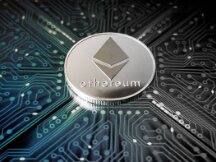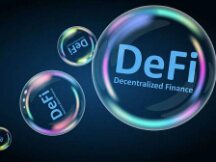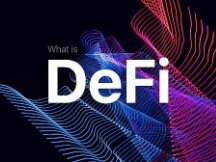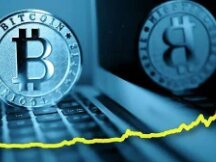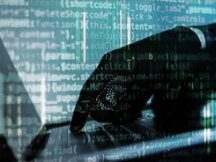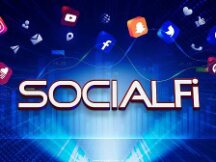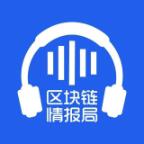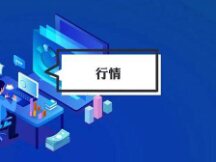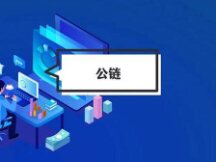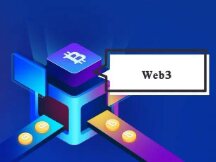DAO is the magic gateway to DeFi, NFT and GameFi.
A week ago, Alice Ma and several others on Twitter commented upon learning that Sotheby's had put U.S. law on racing, fearing the wealthy would take pictures and behave properly. Don't buy them together! ”After a few hours of nighttime chatting with his friends, the jokes gradually became a mature idea and they really decided to enter this contest!
This is the origin of the DAO Constitution, a decentralized autonomous organization. Members raised $ 40 million worldwide in six days, and although the final campaign failed, the competition itself was pretty exciting. At $ 206.26, many entrants are new to crypto wallets and get a taste of the competition.
DAO is a great organization, a kind of free fun-fate-based connection that suits today's cyberspace and the future Web3.0 world.
With the recent rise of the meta-world and Web3.0, the importance of DAOs in the virtual world has become increasingly important. With a basic design, DAO seems to be able to integrate with many hotspots, so it has a lot of surprises in store. Now, DAO management has started to become the standard structure of chain operations, and more vertical segmentation has arisen one after another, gradually improving to become "Legos organizations". . According to deepdao data, as of November 18, DAO's ecological AUM stood at $ 13.7 billion and the number of tokens / community members was 1.4 million, which makes it relevant.

DAO Ecology Snapshot Source: Media
So what is DAO? What do you see? Which DAO projects do we need to pay attention to now?
Future-oriented DAO
Decentralized Autonomous Organization (DAO) is a new way of working together, using smart management and business support to help organizations achieve their goals of self-esteem, self-regulation, and self-transformation. - Define the rules. , not controlled by a centralized organization.
In particular, the DAO is capable of making decisions and being able to accomplish them, so that members are involved with minimal confidence through processes such as recognizing member needs, making clear and fluid decisions, and the tokenization of decisions may be tempted to do so. DAO the. At the same time, all DAO activities and policies are locked onto the blockchain without the intervention of a third party, making DAO very independent.
Overall, DAOs will replace traditional power centers with smart contracts, and decentralized autonomy will change bureaucracy, allowing organizations to achieve the highest efficiency and cost changes. A DAO with the above functionality might be one of the requirements to support Metaverse and Web3.0.
We know that the transition is a success on the Internet, the virtual world is becoming more and more popular on Web3.0. It requires fair trade, more power generation and more and more connectivity. How to create the world? In terms of corporate relations, DAO provided the best possible solutions.
DAO member connections are designed across a mesh to provide free and more complete communication, and the roles of organization members may change at any time. Web3.0 is open source and programmable, "Lego Organization" DAO can integrate according to your needs, modify and call various smart contracts in Web3.0 and provide endless potential of the meta-world. Web3.0 is also the Internet, which is owned and defined by users and developers, rather than becoming a solid organization with hardware and data, it is fair, reliable and free from DAO agencies. Cooperation.
Of course, fully implementing DAO, Metaverse, and Web3.0 still requires some patience, so let's take a look at the current improvements in this area. With its low-profile design, DAOs are connected to many parts of the crypto industry, and DAOs can be seen as the intersection of popular segments of the crypto industry. Here are the details of DAO improvements in DeFi, DeFi2.0, NFT, GameFi etc.
DAO × DeFi: The key to DeFi's evolution
DAO generally appears in two forms in the field of DeFi. The first is Venture DAO, which invests heavily in DeFi operations, bringing together the individual strengths of the DAO organization and leveraging expertise to reduce investments. This type of DAO can seek and research investments in the DeFi sector, raise funds through the electoral process and the organization's smart contracts, breeding plans, and then generate income. Agencies include ForceDAO and AladdinDAO.
Venture DAOs are not only functional in the DeFi arena, but can be seen in all popular industries. In these DAO organizations, all members can make investment recommendations for the DAO and choose the best jobs for the community through a competition. This allows Venture DAOs to combine expertise from multiple industries while working with capital and network members.
Another is that DAOs have become partners who help develop contracts. In other words, DeFi operations directly adopt the DAO management model, allowing insurers to participate in the ecosystem and share in the profits. In these functions, token holders, as members of the community with the right to make decisions, can design and improve processes and applications by consensus, and when organizations use DeFi products as a means of payment and distribution, DAOs are not the basis. and digitization. Organizations in this area include MakerDAO (MKR) and SynthetixDAO (SNX). With the improvement and redesign of DeFi, this model has been adopted by more and more functions.
Currently DeFi is undergoing an overhaul and the concept of DeFi 2.0 is still being discussed and implemented. DeFi2.0 is committed to transforming capabilities into a standard layer of DeFi and achieving sustainable development. The adoption of the standard DAO management system has become one of the standards which stands for DeFi1.0 and DeFi2.0.
DeFi2.0 requires multiple data encryption organizations and standards management, i.e. virtual administration. Ecological governance and decision-making power is vested in community members, all of which are affiliated and historically affiliated organizations. To prevent the position from being managed by the great whale, the risk of Management Token holders changing their contracts is also reduced. Currently, the most popular DAO in the DeFi2.0 field is OlympusDAO, and there is speculation that most of the participants in the future DeFi2.0 Tokemak project will be a DAO organization.
DAO × NFT: Community of temperature and resonance
The combination of DAO and NFT has led to a change in the business model. Currently, most DAOs hold, vote and administer ERC-20 tokens, but in this process the participants in the management must be the investors, and the management can also be controlled by scientists. As a result, some DAOs use NFTs to select votes so that all members receive a fair constitution.
Regarding special applications, over the past two years, many new DAOs have focused on collecting and investing in NFTs, and have sustained and increased the value of NFTs through community mobilization. Additionally, since some expensive NFTs are not market-friendly, competition from many DAOs has arisen. In this type of DAO, members have the right to decide which NFT to invest in, and they can share NFTs that have been purchased or leased, modified or used on another DeFi platform as agreed. Representative organizations include PleasrDAO and PartyDAO.
Because NFT stakeholders continue to profit from non-financial activities, there is a rich DAO ecosystem in this area, creating a warm and resonant community. For example, in some NFT-based social DAOs, individuals will be the same collection of NFTs creating a community with a unique ID to maximize capacity. This summer, NFT avatars like BAYC and Cryptopunk sold out for exorbitant prices, enough to get a warm response from the community.
There are also content creation and distribution platforms that are commercially developed by DAO. The simple model is to use NFTs to tokenize the ownership of digital content and create a closed loop of content based on the content, such as production, investment, exchange and use. . Content aggregators created ad hoc DAOs to collaborate in the creation of illegal content, and loose and complex connections made the creation even more powerful.
DAO × GameFi: The Future of the Meta-World is Here
GameFi games, especially the recently emerged meta-world game series, attempt to create a completely decentralized world. These types of games themselves are regulated by the DAO. Players can vote to determine how the game world works, have full ownership of in-game equipment and treasures, and ultimately have the action.
Additionally, GameFi's reputation is inextricably linked with support for certain DAOs, like the YGG and Merit Circle gaming guilds. The DAO service provides the resources, facilities and technical support for GameFi and allows multiple players to agree on better game rules and design.
Take YGG as an example, it's DAO with over ten thousand growing players. Members use NFTs in P2E games to generate real money for communities while constantly monitoring and identifying new activities. Communities and ecosystems continue to grow and develop. Additionally, YGG will transform participants into owners and leaders of the entire YGG network ecosystem by providing tokens and providing greater flexibility and scalability to the organization by subDAO model. From the current perspective, community governance processes such as DAO services can encourage more actors to participate and can adapt to changes in industry, commerce and industry.
GameFi is an important access to the Metaverse, and it's also the furthest away of all the Metaverse apps at this point. Many sports organizations and DAOs continue to expand their community membership in the digital world, issue tokens and establish a direction to start their own businesses. GameFi's multiplayer design and leadership is the future of the meta world.
system
It can be seen that DAOs can build successful organizations in many areas and function well, and DAO organizations can continue to support the work. The performance can support the analysis of management tokens and supporting members, which will create a feedback circle and attract more people to DAO, which will promote better decision making and build social relationships within the organization. .
However, the current DAO still faces some issues, such as the security risk of open source code, the psychological impact of the exchange group, and the preference for lying. In addition, it is not easy to “watch” for the majority of participants, which is not a fair system that divides the rights of all participants equally. Also, if the problem is not resolved, what can we do to ensure the safety of the participants? On the other hand, the independence of the different DAOs is also strong, and each DAO has its own rules and objectives and operates independently. Whether you are currently a DAO internally or across multiple DAO organizations, you may need to explore multiple openings.
In response to the above issues, some new companies and organizations have announced their own solutions, and technological improvements in various areas, such as building in the field of encryption, will also facilitate the development of DAO. Look forward to the future of DAO together.

Scan QR code with WeChat
